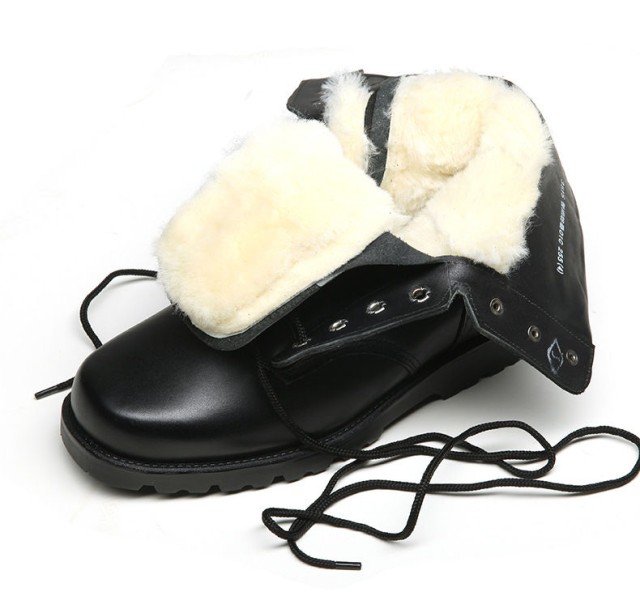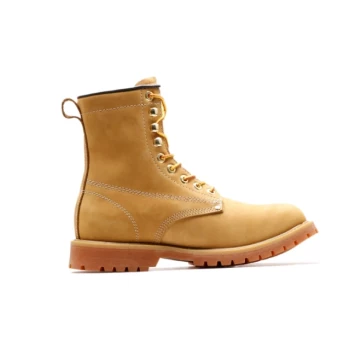When temperatures plummet, the right work boots become more than footwear—they're critical safety equipment. Advanced material technologies in modern work boots actively prevent cold-induced occupational injuries like frostbite, hypothermia, and Raynaud's Syndrome. This article explores how insulation systems, moisture barriers, and ergonomic designs create thermal protection that keeps workers safe in sub-zero conditions.
Work Boots as Cold Climate Guardians
Work boots serve as the first line of defense against temperature extremes. Unlike ordinary footwear, they incorporate specialized materials that:
- Create thermal barriers against conductive heat loss
- Block wind penetration while allowing breathability
- Maintain protective capabilities during prolonged exposure
Research shows properly insulated work boots can reduce cold stress injuries by over 60% in outdoor occupations. For workers in utilities, security, or construction facing temperatures between -10°F to 10°F, these technologies mean the difference between safe productivity and dangerous exposure.
Insulation Technologies for Sub-Zero Resistance
Thinsulate and Its Alternatives
High-performance insulation works by trapping warm air while resisting conductive heat transfer. Common systems include:
-
Synthetic Fiber Insulation (800g-1000g)
- Ideal for low-activity workers in extreme cold
- Maintains warmth during static positions
- Lightweight compared to traditional wool linings
-
Aerogel-Infused Layers
- Exceptional warmth-to-weight ratio
- Effective in wet conditions
- Used in arctic-grade safety footwear
-
Phase-Change Materials
- Absorb/release heat based on temperature
- Regulate microclimate inside boots
- Prevent sudden temperature drops
Did you know? Insulation effectiveness depends on proper fit—oversized boots allow heat loss through air gaps, while tight boots compress insulating layers.
Waterproofing vs. Water Resistance in Moisture Management
Critical Differences
| Feature | Waterproof Boots | Water-Resistant Boots |
|---|---|---|
| Protection | Fully impermeable | Repels light moisture |
| Materials | Sealed membranes | Dense weave fabrics |
| Use Case | Slush, standing water | Light snow, damp surfaces |
Waterproof membranes like Gore-Tex® prevent liquid penetration while allowing vapor escape—crucial for preventing:
- Frostbite from damp insulation
- Trench foot in prolonged wet conditions
- Ice accumulation inside footwear
Traction and Ergonomics for Frostbite Prevention
Anti-Slip Sole Technologies
-
Vibram® Arctic Grip
- Remains flexible below -40°F
- Micro-glass fibers enhance ice traction
-
Multi-Directional Lugs
- Prevent snowballing underfoot
- Channel slush away from contact points
Ergonomic Considerations
- Heel Locks: Reduce friction that causes heat loss
- Metatarsal Guards: Distribute weight evenly to maintain circulation
- Flex Zones: Allow natural movement without compromising insulation
Workers in oil rigs or mountain rescue teams report 72% fewer cold-related foot injuries when using boots combining these features.
Beyond Cold: Multi-Weather Protective Features
Modern work boots often integrate:
- Convertible Insulation: Removable liners for variable climates
- Hybrid Ventilation: Zoned breathability for temperature regulation
- All-Weather Outsoles: Perform equally in summer heat and winter ice
These technologies demonstrate how footwear engineering now addresses year-round protection rather than just seasonal needs.
Ready to equip your workforce with advanced cold-weather footwear? 3515 partners with distributors and safety managers to deliver OSHA-compliant work boots featuring these protective technologies. Our manufacturing expertise ensures your bulk orders meet exacting safety standards without compromising comfort—because no worker should choose between productivity and protection.
Related Products
- Wholesale Durable Safety Boots | Custom Steel Toe & Puncture-Resistant Manufacturing
- Custom Wholesale Leather Safety Boots Direct Factory Manufacturing
- Wholesale Slip-On Safety Boots Manufacturer - Custom Puncture-Proof & Steel Toe
- Durable Steel Toe Safety Boots Wholesale & Custom Manufacturing
- Wholesale Safety Footwear Manufacturer for Bulk & Custom OEM Orders
Related Articles
- Steel Toe Boots vs. Modern Alternatives: Making the Right Safety Choice
- How to Choose Safety Footwear for Electrical Hazard Jobs: Steel Toe vs. Composite Toe
- Steel Toe vs. Composite Toe Boots: How to Choose the Right Safety Footwear for Your Job
- Matching Men’s Work Shoe Safety Technologies to Workplace Hazards
- How Steel Toe Boots Combine Safety Compliance with All-Day Comfort



















